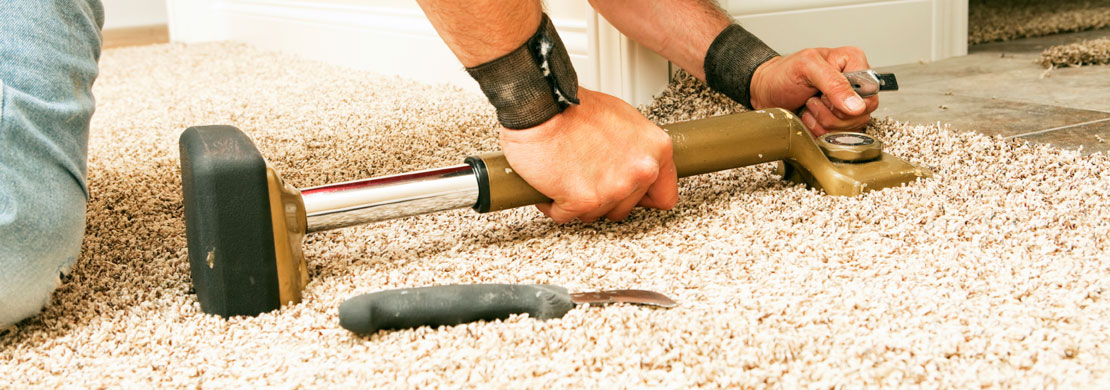Ventilation is crucial in maintaining indoor air quality and comfort, yet its importance varies greatly across different climate zones. Understanding how climate impacts ventilation becomes essential as homeowners look for the most effective ways to regulate temperature and humidity.
Whether residing in the sweltering heat of tropical regions or enduring frigid winters, finding tailored house ventilation solutions can make all the difference. This blog post delves into practical strategies that cater to specific climates while ensuring efficient Heat-Exchange Systems work harmoniously within your home. Discover how thoughtful design choices can create inviting living spaces regardless of external weather conditions.
Understanding the Impact of Climate on Heat Exchange System
Climate significantly influences how Heat-Exchange Systems operate in residential settings. The temperature and humidity levels dictate the flow of air, which affects energy efficiency and comfort. In hot climates, high humidity can lead to moisture buildup. Heat Exchange System must be designed to manage this excess water effectively while cooling indoor spaces. The goal is to maintain a comfortable environment without overworking the system. Conversely, cold climates require heat exchangers that prioritize warmth retention. These systems should efficiently transfer warm air indoors while minimizing heat loss during frigid conditions.
Moderate zones experience fluctuating temperatures throughout the year. Systems here need versatility, adapting seamlessly from heating to cooling as seasons change. Homeowners can select tailored solutions that enhance ventilation and energy efficiency by understanding these unique climatic demands.
Heat-Exchange Systems for Hot and Humid Climates
Hot and humid climates present unique challenges for ventilation. Maintaining comfort while controlling indoor humidity becomes essential. Heat-Exchange Systems designed for these conditions work by transferring heat between incoming and outgoing air streams. This minimizes the energy needed for cooling, making homes more efficient. These systems often incorporate dehumidification features that extract moisture from the air before it enters living spaces. This dual function not only cools but also enhances overall indoor air quality.
Properly installed, these solutions can significantly reduce reliance on traditional AC units. With less strain on energy resources, homeowners enjoy lower utility bills alongside a comfortable environment year-round. Incorporating smart technology can further optimize performance. Monitoring humidity levels automatically adjusts airflow to achieve ideal conditions without manual intervention. Such advancements demonstrate how tailored Heat-Exchange Systems effectively address specific climate demands while promoting sustainability in housing design.
Effective House Heat-Exchanger Solutions for Cold Climates
Cold climates pose unique challenges to maintaining indoor comfort. Effective house heat-exchangers play a crucial role in this scenario. These systems help to capture and reuse heat from exhaust air, minimizing energy loss. One popular solution is using balanced ventilation systems with heat recovery ventilators (HRVs). HRVs transfer warmth from outgoing stale air to incoming fresh air, ensuring homes remain cozy without excessive energy consumption.
Another option includes ducted Heat-Exchange Systems that distribute warm air evenly throughout the living space. This ensures every room benefits from consistent temperatures, reducing cold spots. In addition, incorporating insulation around ducts can further enhance efficiency. By preventing heat loss during transit, these measures contribute significantly to home warmth while keeping utility bills in check.
Moderate Climate Ventilation: Passive House Heat Exchanger Benefits
Moderate climates offer a unique opportunity to optimize ventilation through Passive House Heat Exchanger. These systems effectively balance indoor air quality and energy efficiency. Passive houses utilize advanced insulation techniques, which minimize heat loss during cooler months while preventing overheating in the summer. This approach ensures a consistent and comfortable living environment year-round.
Heat exchangers play a crucial role by transferring warmth from outgoing stale air to incoming fresh air without mixing it. As a result, homes remain well-ventilated without sacrificing energy efficiency. Moreover, such systems reduce reliance on mechanical heating or cooling methods. They capitalize on natural temperature differentials for optimal performance while lowering utility bills. Installing these innovative solutions promotes healthier indoor environments, too. Clean, filtered outdoor air circulates throughout the home, diminishing allergens and pollutants that can accumulate indoors over time.
Cross-Ventilation Techniques with Heat Exchange Ventilation
Effective ventilation is essential for maintaining indoor air quality and comfort, especially in modern buildings that are increasingly airtight. Combining cross-ventilation techniques with heat exchange ventilation can enhance energy efficiency while ensuring a fresh and comfortable indoor environment.
What is Cross-Ventilation?
Cross-ventilation involves strategically placing openings, such as windows and vents, to allow natural airflow through a space. By creating a flow of air from one side of a room to the other, cross-ventilation helps remove stale air and reduce indoor temperatures. This method relies on natural wind patterns and temperature differences between indoor and outdoor environments.
Understanding Heat Exchange Ventilation
Heat exchange ventilation, or heat recovery ventilation (HRV), uses a mechanical system to transfer heat between incoming and outgoing air streams. This process ensures that fresh outdoor air is pre-warmed or pre-cooled by the outgoing air, reducing the energy required for heating or cooling. HRV systems improve indoor air quality without compromising energy efficiency.
Combining Cross-Ventilation with Heat Exchange
Integrating cross-ventilation with heat exchange ventilation can optimize both natural and mechanical airflow. Cross-ventilation helps reduce the load on the HRV system by promoting initial air movement and cooling. Meanwhile, the HRV system maintains temperature control and air quality, ensuring that the benefits of natural ventilation are complemented by efficient mechanical support.
Utilizing a Passive House Ventilation System in Extreme Conditions
Passive ventilation systems excel in extreme conditions by prioritizing energy efficiency while maintaining indoor air quality. These systems leverage heat recovery to minimize energy loss during both chilling winters and scorching summers. In the cold months, incoming fresh air passes through a heat exchanger. This process warms the air without requiring additional heating sources. It effectively reduces reliance on conventional heating methods, translating into lower utility bills.
During hot summers, Passive House Ventilation System use the same heat exchanger to cool the incoming air. This process pre-cools the air before it enters the living space, reducing reliance on air conditioning. In addition, these systems are designed to maximize natural airflow and take advantage of shading and thermal mass to keep temperatures comfortable. Furthermore, passive ventilation systems also incorporate filters to improve indoor air quality. These filters can effectively remove dust, pollen, and allergens from the incoming air.
Conversely, hot and humid climates present their challenges as well. The system cools incoming air using the cooler exhaust inside the home, allowing for comfort without excessive energy expenditure. These solutions emphasize continuous airflow throughout every season. They adapt seamlessly to varying weather patterns, ensuring residents enjoy optimal living conditions regardless of external temperatures or humidity. Embracing passive technology enhances resilience against climate extremes while fostering sustainable architectural practices.
Natural Ventilation and Heat Exchange System for Home for Mild Climates
Natural ventilation is crucial in mild climates, where temperature extremes are less common. This approach leverages the outdoor air to maintain comfortable indoor conditions without relying heavily on mechanical systems. Integrating Heat Exchange System for Home enhances this process. By capturing and reusing energy from outgoing air, these systems ensure that homes remain efficient while benefiting from fresh airflow. They work seamlessly with open windows and strategically placed vents.
During cooler nights, natural ventilation allows for refreshing breezes that effectively cool spaces. Meanwhile, heat exchangers can regulate indoor warmth when temperatures rise during the day by transferring excess heat outside. This synergy not only promotes comfort but also reduces energy consumption. Homeowners interested in sustainability will find this combination especially appealing as it minimizes reliance on fossil fuels while maximizing indoor air quality.
Energy-Efficient House Heat Exchanger for All Seasons
Energy-efficient Heat-Exchange Systems are crucial in maintaining indoor comfort throughout the year. These systems adapt to seasonal changes, ensuring optimal temperature regulation without excessive energy consumption. They help expel warm air in summer while drawing in cooler outside air. This process minimizes reliance on air conditioning, leading to significant savings on utility bills. These systems work efficiently during winter by capturing and recycling heat from indoor spaces.
Advanced technology allows for precise control over airflow and ventilation rates. Homeowners can enjoy fresh air circulation while minimizing energy loss. Moreover, modern designs often incorporate smart home integration features. This innovation enables remote monitoring and adjustment of settings based on real-time weather conditions. Choosing a House Heat Exchanger contributes to personal comfort and supports environmental sustainability goals by reducing overall carbon footprints.
Seasonal Adjustments for Ventilation and Humidity Control with a Heat Exchange Ventilation in Coastal Areas
Seasonal adjustments are essential for optimizing heat exchange ventilation systems, especially in coastal areas. The humidity levels can fluctuate significantly throughout the year, impacting indoor air quality. In summer, maintaining a balance between cooling and ventilation becomes crucial. Adjusting the system to enhance airflow helps mitigate muggy conditions while ensuring low energy consumption.
As winter approaches, it’s important to recalibrate the settings. This may involve reducing fresh air intake and increasing heating elements to combat dampness without losing comfort. Humidity control is vital during these transitions. Implementing dehumidifiers alongside heat exchange units can effectively manage moisture levels, preventing mould growth that is common in coastal environments. Regular monitoring of temperature and humidity will ensure adjustments align with seasonal changes. A proactive approach guarantees optimal performance from the Heat-Exchange System all year round.
Conclusion
When it comes to house ventilation, understanding the specific needs of different climate zones is essential. Tailoring solutions ensure that homes remain comfortable year-round. Homeowners have a plethora of options at their disposal. Integrating natural ventilation with mechanical systems can also yield impressive energy efficiency and indoor air quality results. This holistic perspective allows for tailored strategies catering to unique environmental challenges. Investing time into researching these various methods pays off significantly. Properly implemented solutions improve comfort and contribute positively to energy savings and sustainability goals.
FAQS
What is a house ventilation system?
A house ventilation system controls the exchange of indoor and outdoor air. It helps manage humidity, temperature, and air quality within homes.
How does climate influence ventilation systems?
Climate affects how heat is exchanged in buildings. Hot and humid climates require solutions different from cold or moderate environments to ensure comfort and efficiency.
What are some effective heat exchange solutions for hot climates?
Energy recovery ventilators (ERVs) are recommended in hot climates. They maintain coolness indoors while removing excess moisture from the air.
Can passive systems be effective in extreme conditions?
Yes, passive systems can work well even under extreme conditions. They utilize natural airflow principles combined with heat exchanges to regulate temperatures effectively.
Are there specific techniques for cross-ventilation using heat exchangers?
Cross-ventilation techniques involve strategically placing openings on opposite sides of the home. This encourages fresh air circulation through a heat exchange process that enhances comfort levels indoors.
| Related Business Listings |
| Contact Directory |
| Local Business Profiles |




